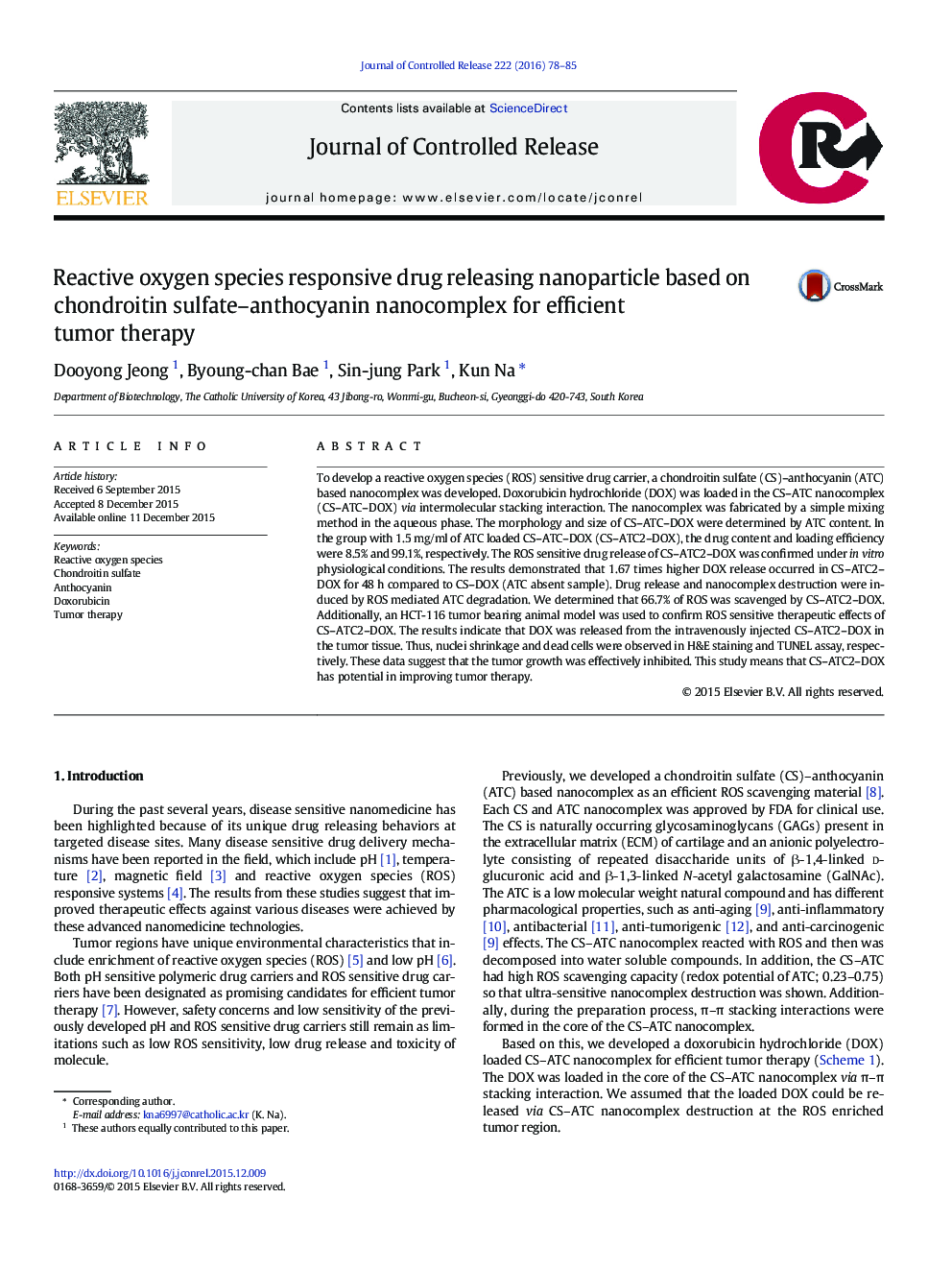| Article ID | Journal | Published Year | Pages | File Type |
|---|---|---|---|---|
| 1423603 | Journal of Controlled Release | 2016 | 8 Pages |
To develop a reactive oxygen species (ROS) sensitive drug carrier, a chondroitin sulfate (CS)–anthocyanin (ATC) based nanocomplex was developed. Doxorubicin hydrochloride (DOX) was loaded in the CS–ATC nanocomplex (CS–ATC–DOX) via intermolecular stacking interaction. The nanocomplex was fabricated by a simple mixing method in the aqueous phase. The morphology and size of CS–ATC–DOX were determined by ATC content. In the group with 1.5 mg/ml of ATC loaded CS–ATC–DOX (CS–ATC2–DOX), the drug content and loading efficiency were 8.5% and 99.1%, respectively. The ROS sensitive drug release of CS–ATC2–DOX was confirmed under in vitro physiological conditions. The results demonstrated that 1.67 times higher DOX release occurred in CS–ATC2–DOX for 48 h compared to CS–DOX (ATC absent sample). Drug release and nanocomplex destruction were induced by ROS mediated ATC degradation. We determined that 66.7% of ROS was scavenged by CS–ATC2–DOX. Additionally, an HCT-116 tumor bearing animal model was used to confirm ROS sensitive therapeutic effects of CS–ATC2–DOX. The results indicate that DOX was released from the intravenously injected CS–ATC2–DOX in the tumor tissue. Thus, nuclei shrinkage and dead cells were observed in H&E staining and TUNEL assay, respectively. These data suggest that the tumor growth was effectively inhibited. This study means that CS–ATC2–DOX has potential in improving tumor therapy.
Graphical abstractFigure optionsDownload full-size imageDownload high-quality image (94 K)Download as PowerPoint slide
